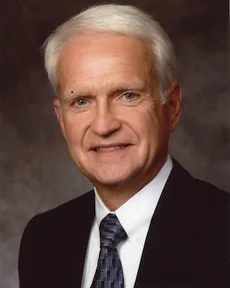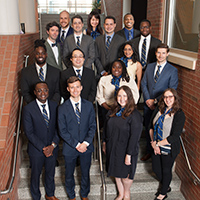Flaum Adds Ocular Oncology Service
A cancer diagnosis is always a shock. When a tumor is found inside the eye, it can magnify the seriousness: A cure could result in blindness. Ocular oncologists specialize in the diagnosis and treatment of cancers inside the eye and, sometimes, the supporting structures. They walk a tightrope of care, pulling out all the stops to preserve life while trying to save useful vision. These hyper-focused ophthalmologists are as rare as the tumors they treat — fewer than 100 practice in the United States.
Until recently, ocular oncology was a specialty that was referred outside of FEI. The nearest treatment centers are in metropolitan New York, Philadelphia, and Cleveland. But the arrival of Vikas Khetan, MBBS., has changed this. Khetan is a fellowship-trained retina specialist. He became interested in ocular tumors when he was doing his retina fellowship in Chennai, India, in 2004. This prompted him to seek additional training in pediatric and adult ocular oncology at the University of Toronto. He returned to India where he practiced retina and ocular oncology. His addition to the team is another capstone in FEI Chair David DiLoreto’s strategy to build a leading destination for complete eye care.
“Every year we send about 15–20 patients to Cleveland or Philadelphia,” DiLoreto said. “Even though eye cancers are relatively rare, we estimate that there are about 50 cases per year in our region. And this is just a fraction of the total number of eye tumors out there that are non-cancerous but still need proper diagnosis and monitoring. This new service is going to be helpful to families and individuals (and their referring doctors) who can now receive the most up-to-date treatments within a two-hour drive from their homes.”
Khetan treats many eye cancers, including the most common form — intraocular melanomas. These tumors generally occur in adults over 50. People with light-colored skin and eyes are at higher risk than most. The majority of cases start in the choroid, a layer at the back of the eye just behind the retina. The choroid’s job is to nourish and provide oxygen to the eye through a dense network of blood vessels. Many symptoms of intraocular melanoma can be caused by other eye and health problems, so it is important for persons over 50 to receive routine eye exams.
Khetan also treats retinoblastoma. This rare condition affects children: Only about 300 cases are diagnosed each year in the United States. Although the cancer generally occurs spontaneously during a child’s development, through a gene mutation, survivors of retinoblastoma can pass this gene to offspring. The average age at retinoblastoma diagnosis is 18 months, and it nearly always presents before age 4. Like other eye cancers, symptoms can be confused with a host of other problems, but can include a white pupil instead of the normal black color, misaligned eyes, different colored irises, or an enlarged pupil. Parents or pediatricians noticing these should consult an eye specialist.
“Intraocular melanomas, retinoblastomas and other tumors are easily detected by an optometrist or ophthalmologist during an eye exam,” Khetan said. “This is because the eye is a clear window. When an irregularity is seen, patients are then referred to an ocular oncologist to confirm the diagnosis. If it is cancer, we can then determine the course of treatment.”
Technology ocular oncologists use to confirm eye cancers might include ultrasound, MRI, or angiography (when a dye injected into the patient’s bloodstream reveals abnormalities through photographs taken of the back of the eye). In rare cases biopsies are performed, through which a doctor surgically collects abnormal cells and sends them to a pathologist for analysis. The purpose of these tests is to determine whether a tumor is cancerous and, if it is, understand the extent of the threat it poses (called staging) in order to guide treatment decisions.
The goal of treatment for intraocular cancer is always eradication. Intraocular melanomas and retinoblastomas are fatal if undiagnosed or not treated appropriately. However, advances in cancer treatment, including more targeted therapies, have become increasingly successful at preserving vision without compromising survival rates.
“Not long ago, many children with retinoblastoma would lose at least one eye,” Khetan said. “And enucleation (surgical removal of an eye) was also a first-line option for patients with aggressive intraocular melanomas. But now we have many choices. These include locally targeted treatments, including Brachy therapy. This is where we surgically implant a small disc in the eye that is seeded with radioactive material that can destroy cancer cells. It is removed after a few days and can be very effective at shrinking or eliminating a tumor while preserving useful vision. We also have surgical resection of tumors, laser therapy, cryotherapy, chemotherapy, and beam radiation. Used judiciously, their side-effects on vision can be minimized. Enucleation is still an option, but we reserve it for the most difficult to control cases.”
“The good news,” continued Khetan, “is that with early diagnosis and treatment, the survival rates from ocular cancers are becoming better with each generation of treatment technology. If detected early, children with retinoblastoma have a 99 percent survival rate in the developed world. The numbers for adults with ocular melanoma are also excellent as we have learned how to predict the aggressiveness of these tumors and treat them appropriately.”
Kehtan also participates in patient care with doctors at the Wilmot Cancer Institute as part of an interdisciplinary team. Patients with late stage and metastatic cancers sometimes develop ocular-related complications and secondary tumors. This happens most commonly with breast, lung, or prostate cancers, but can occur with many forms of cancer. His experience and passion in ocular oncology provides a crucial piece to Wilmot’s armamentarium.
“We are so excited to have Vikas here,” DiLoreto said. “For patients facing cancer, diagnosis and treatment becomes a months-long string of appointments. By having his expertise in our region, we believe that we are improving the lives of people. Now they can focus on getting well without having to worry about costly and time-consuming travel. This isn’t just a win for the Eye Institute, it’s a win for upstate New York.”
Stephen Kofron | 9/7/2022



